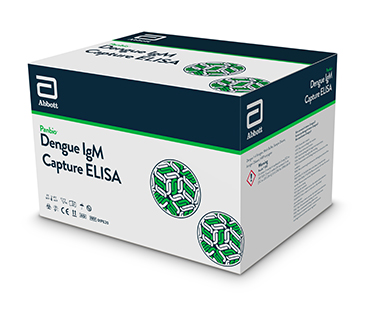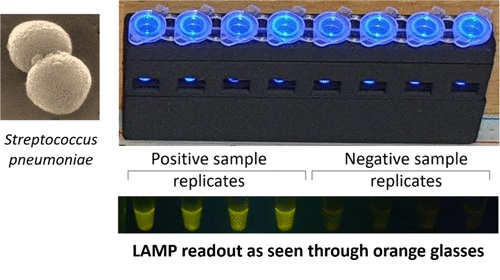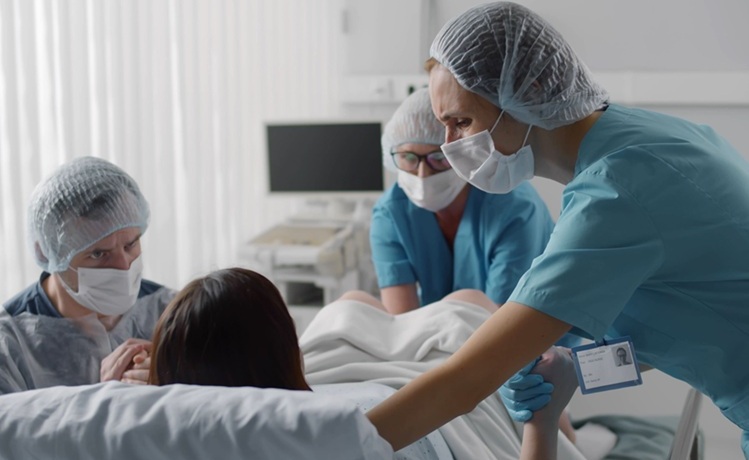Combining RDTs Determines Dengue Immune Status
|
By LabMedica International staff writers Posted on 18 May 2022 |

Dengue is an emerging arboviral infectious disease (DENV), transmitted through the bite of an Aedes mosquito that burdens much of the urbanized tropical and subtropical world. Current dengue diagnostics are primarily concerned with capturing active infections, thus no such method exists for determining primary or post-primary DENV infections, at the point of care.
By assaying for changes in both DENV IgM and IgG antibodies, a rise in IgM titers coupled with high and low convalescent IgM: IgG ratios indicate active primary and secondary infections, respectively. Scientists have investigated how combining different rapid diagnostic tests (RDTs) can be used to accurately determine the primary and post-primary DENV immune status of reporting patients during diagnosis.
A team of scientist specializing in tropical medicine and led by those at the London School of Hygiene and Tropical Medicine (London, UK) collected serum from cross-sectional surveys of acute suspected dengue patients in Indonesia (N:200) and Vietnam (N: 1,217) and were assayed using dengue laboratory assays and RDTs. The team used logistic regression modeling, and determined the probability of being DENV NS1, IgM and IgG RDT positive according to corresponding laboratory viremia, IgM and IgG ELISA metrics.
Samples were assayed for the presence of DENV1-4 viremia using the CDC fourplex, real-time polymerase chain reaction (RT-PCR) test. The presence of DENV IgM and IgG antibodies was performed using Panbio capture ELISAs (Abbott, East Princeton, NJ, USA). Assays detect IgM/G antibodies specific to all serotypes and provide plate-calibrated titer outputs termed ‘panbio units’. Another RDTs used in the study were DENV NS1 RDT (Bio-Rad, Hercules, CA ,USA). Among samples from Indonesia, patient serum samples were tested for DENV NS1 using both Abbott’s NS1 capture ELISAs) and NS1 RDTs (SD Biosensor, Yeongtong-gu, Republic of Korea).
The investigators reported that combining NS1, IgM and IgG RDTs captured 94.6% (52/55) and 95.4% (104/109) of laboratory-confirmed primary and post-primary DENV cases, respectively, during the first 5 days of fever. Laboratory test predicted, and actual, RDT outcomes had high agreement (79.5% (159/200)). Among patients from the Philippines, different combinations of estimated RDT outcomes were indicative of post-primary and primary immune status. Overall, IgG RDT positive results were confirmatory of post-primary infections. In contrast, IgG RDT negative results were suggestive of both primary and post-primary infections on days 1–2 of fever, yet were confirmatory of primary infections on days 3–5 of fever.
The authors concluded that they had described methods for estimating the primary and post-primary immune status of dengue patients at the point of care, using a combination of simple-to-use rapid diagnostic tests. Using all three NS1, IgM and IgG RDTs, they demonstrated how at certain stages of infection health care workers and surveillance operations could confidently determine types of dengue infections. The study was published on May 4, 2022 in the journal PLOS Neglected Tropical Diseases.
Related Links:
London School of Hygiene and Tropical Medicine
Abbott
Bio-Rad
SD Biosensor
Latest Microbiology News
- High-Throughput Enteric Panels Detect Multiple GI Bacterial Infections from Single Stool Swab Sample
- Fast Noninvasive Bedside Test Uses Sugar Fingerprint to Detect Fungal Infections
- Rapid Sepsis Diagnostic Device to Enable Personalized Critical Care for ICU Patients
- Microfluidic Platform Assesses Neutrophil Function in Sepsis Patients
- New Diagnostic Method Confirms Sepsis Infections Earlier
- New Markers Could Predict Risk of Severe Chlamydia Infection
- Portable Spectroscopy Rapidly and Noninvasively Detects Bacterial Species in Vaginal Fluid
- CRISPR-Based Saliva Test Detects Tuberculosis Directly from Sputum
- Urine-Based Assay Diagnoses Common Lung Infection in Immunocompromised People
- Saliva Test Detects Implant-Related Microbial Risks
- New Platform Leverages AI and Quantum Computing to Predict Salmonella Antimicrobial Resistance
- Early Detection of Gut Microbiota Metabolite Linked to Atherosclerosis Could Revolutionize Diagnosis
- Viral Load Tests Can Help Predict Mpox Severity
- Gut Microbiota Analysis Enables Early and Non-Invasive Detection of Gestational Diabetes
- Credit Card-Sized Test Boosts TB Detection in HIV Hotspots
- Fecal Metabolite Profiling Predicts Mortality in Critically Ill Patients
Channels
Clinical Chemistry
view channel
VOCs Show Promise for Early Multi-Cancer Detection
Early cancer detection is critical to improving survival rates, but most current screening methods focus on individual cancer types and often involve invasive procedures. This makes it difficult to identify... Read more
Portable Raman Spectroscopy Offers Cost-Effective Kidney Disease Diagnosis at POC
Kidney disease is typically diagnosed through blood or urine tests, often when patients present with symptoms such as blood in urine, shortness of breath, or weight loss. While these tests are common,... Read moreMolecular Diagnostics
view channel
New Diagnostic Method Detects Pneumonia at POC in Low-Resource Settings
Pneumonia continues to be one of the leading causes of death in low- and middle-income countries, where limited access to advanced laboratory infrastructure hampers early and accurate diagnosis.... Read more
Blood Immune Cell Analysis Detects Parkinson’s Before Symptoms Appear
Early diagnosis of Parkinson’s disease remains one of the greatest challenges in neurology. The condition, which affects nearly 12 million people globally, is typically identified only after significant... Read moreHematology
view channel
ADLM’s New Coagulation Testing Guidance to Improve Care for Patients on Blood Thinners
Direct oral anticoagulants (DOACs) are one of the most common types of blood thinners. Patients take them to prevent a host of complications that could arise from blood clotting, including stroke, deep... Read more
Viscoelastic Testing Could Improve Treatment of Maternal Hemorrhage
Postpartum hemorrhage, severe bleeding after childbirth, remains one of the leading causes of maternal mortality worldwide, yet many of these deaths are preventable. Standard care can be hindered by delays... Read more
Pioneering Model Measures Radiation Exposure in Blood for Precise Cancer Treatments
Scientists have long focused on protecting organs near tumors during radiotherapy, but blood — a vital, circulating tissue — has largely been excluded from dose calculations. Each blood cell passing through... Read moreMicrobiology
view channel
High-Throughput Enteric Panels Detect Multiple GI Bacterial Infections from Single Stool Swab Sample
Gastrointestinal (GI) infections are among the most common causes of illness worldwide, leading to over 1.7 million deaths annually and placing a heavy burden on healthcare systems. Conventional diagnostic... Read more
Fast Noninvasive Bedside Test Uses Sugar Fingerprint to Detect Fungal Infections
Candida bloodstream infections are a growing global health threat, causing an estimated 6 million cases and 3.8 million deaths annually. Hospitals are particularly vulnerable, as weakened patients after... Read morePathology
view channel
New Molecular Analysis Tool to Improve Disease Diagnosis
Accurately distinguishing between similar biomolecules such as proteins is vital for biomedical research and diagnostics, yet existing analytical tools often fail to detect subtle structural or compositional... Read more
Tears Offer Noninvasive Alternative for Diagnosing Neurodegenerative Diseases
Diagnosing and monitoring eye and neurodegenerative diseases often requires invasive procedures to access ocular fluids. Ocular fluids like aqueous humor and vitreous humor contain valuable molecular information... Read moreTechnology
view channel
Cell-Sorting Device Uses Electromagnetic Levitation to Precisely Direct Cell Movement
Sorting different cell types—such as cancerous versus healthy or live versus dead cells—is a critical task in biology and medicine. However, conventional methods often require labeling, chemical exposure,... Read more
Embedded GPU Platform Enables Rapid Blood Profiling for POC Diagnostics
Blood tests remain a cornerstone of medical diagnostics, but traditional imaging and analysis methods can be slow, costly, and reliant on dyes or contrast agents. Now, scientists have developed a real-time,... Read moreIndustry
view channel
Qiagen Acquires Single-Cell Omics Firm Parse Biosciences
QIAGEN (Venlo, Netherlands) has entered into a definitive agreement to fully acquire Parse Biosciences (Seattle, WA, USA), a provider of scalable, instrument-free solutions for single-cell research.... Read more
Puritan Medical Products Showcasing Innovation at AMP2025 in Boston
Puritan Medical Products (Guilford, ME, USA), the world’s most trusted manufacturer of swabs and specimen collection devices, is set to exhibit at AMP2025 in Boston, Massachusetts, from November 11–15.... Read more
Advanced Instruments Merged Under Nova Biomedical Name
Advanced Instruments (Norwood, MA, USA) and Nova Biomedical (Waltham, MA, USA) are now officially doing business under a single, unified brand. This transformation is expected to deliver greater value... Read more




 assay.jpg)




 Analyzer.jpg)












